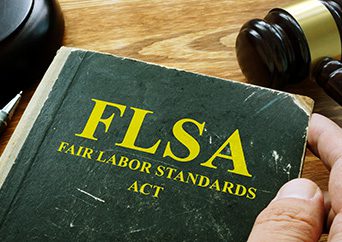The Occupational Safety and Health Administration (OSHA) keeps records not only of the most frequently cited standards overall, but also within particular industries.
The most recent statistics from OSHA reveal the top standards cited in the fiscal year 2023 for the truck transportation industry. This top 10 list comprises establishments that provide over-the-road transportation of cargo using motor vehicles such as trucks and tractor trailers. The subsector is subdivided into general freight trucking and specialized freight trucking.
- General freight transportation establishments handle a wide variety of general commodities, generally palletized and transported in a container or van trailer.
- Specialized freight transportation is the transportation of cargo that, because of size, weight, shape or other inherent characteristics, requires specialized equipment for transportation.
These violations affect three key programs our team focuses on Moving and Storage Insurance, Commercial Trucking Insurance and Tow Truck Insurance.
| Description of Violation | Cited Standard Number | ACV* |
| 1. Powered Industrial Trucks – Powered industrial trucks include forklifts and fork trucks. This standard’s requirements include operator training, inspections and safe work practices. | 29 CFR 1910.178 | $7,918 |
| 2. Hazard Communication – This standard refers to the UN Globally Harmonized System of Classification and Labeling of Chemicals. Requirements include developing and implementing a program, recordkeeping, labeling and training. | 29 CFR 1910.1200 | $2,250 |
| 3. OSH Act General Duty Paragraph – The General Duty Clause requires that employers provide a safe work environment. It is often used when a hazard is not already covered by an existing standard. | 5A0001 | $8,073 |
| 4. General Electrical Requirements – This standard refers to the practice of examining, installing and using electrical equipment of different types, sizes, voltage and current capacity. Requirements include specifications for electrical connections, terminals, guarding live parts and working with 600 volts. | 29 CFR 1910.303 | $1,604 |
| 5. General Rules Applicable to Vehicles – This standard provides the general requirements to follow when using a vehicle within marine terminals. | 29 CFR 1917.44 | $965 |
| 6. Wiring Methods, Components and Equipment for General Use – This standard refers to the practice of using the proper methods when wiring different setups. Requirements include following proper methods for temporary wiring, cable trays, electrical cabinets and switches. | 29 CFR 1910.305 | $2,674 |
| 7. Reporting Fatalities, Hospitalizations, Amputations and Losses of an Eye – This standard covers types of injuries that require OSHA reporting. Fatalities must be reported within 8 hours, and hospitalizations, amputations and eye loss must be reported within 24 hours. | 29 CFR 1904.39 | $6,419 |
| 8. Respiratory Protection – This standard refers to respirators use to protect employees from hazardous substances. Requirements of this standard include a written program, selection of respirators, medical evaluations, fit testing, safe operating procedures and training. | 29 CFR 1910.134 | $14,442 |
| 9. Portable Fire Extinguishers – Portable fire extinguishers are used to by employees to put out small fires. Requirements of this standard include placement of fire extinguishers, employee training and inspections. | 29 CFR 1910.157 | $880 |
| 10. General Personal Protective Equipment (PPE) Requirements – This standard refers to providing, managing and maintaining the proper personal protective equipment for employees. Requirements include identifying required PPE, maintenance, sanitation, replacement and training. | 29 CFR 1910.132 | $2,206 |
*ACV (Average Cost per Violation) – The dollar amount represents the average cost per violation that employers in this industry paid in 2023. To understand the full capacity and scope of each standard, click on the standard number to visit www.osha.gov and view the language in its entirety. Source: OSHA.gov. Design © 2023 Zywave, Inc.Material posted on this website is for informational purposes only and does not constitute a legal opinion or medical advice. Contact your legal representative or medical professional for information specific to your legal or medical needs.
Material posted on this website is for informational purposes only and does not constitute a legal opinion or medical advice. Contact your legal representative or medical professional for information specific to your legal or medical needs.



